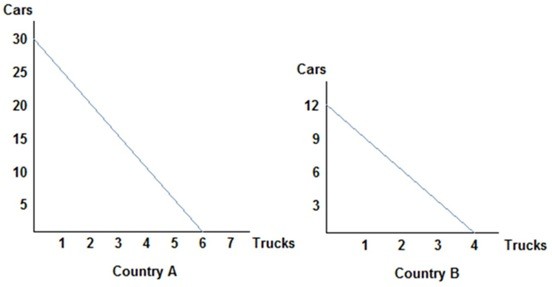Suppose the market for grass seed can be expressed as:
Demand: QD = 100 - 2p
Supply: QS = 3p
If government imposes a $5 specific tax to be collected from sellers, what is the price consumers will pay? How much tax revenue is collected? What fraction is paid by sellers?
At equilibrium without the tax, p = 20 and Q = 60. In addition to receiving their price, sellers must also receive $5 per unit. Rearranging the supply curve yields p = Q/3; adding the tax yields p = (Q/3 ) + 5. Substituting this into the demand curve yields Q = 100 - 2[(Q/3 ) + 5] =
90 - (2/3 )Q or (5/3 )Q = 90. Solving yields Q = 54. Substituting into either demand curve or supply curve plus tax yields p = 23. Tax revenue = 5 ? 54 = 270. Since price rose $3 on a $5 tax, consumers pay 3/5 of the tax or 162, and sellers pay 2/5 of the tax.
You might also like to view...
In the figure above, the total revenue of a perfectly price-discriminating monopolist at the profit-maximizing output is equal to the area of
A) 0aij. B) 0dgh. C) aci. D) obeij.
Jen is offered a job answering the phone in the State U economics department during lunchtime, from noon to 1 p.m., Tuesdays and Thursdays. Her reservation wage for this job is $15 per hour. If the department chair offers Jen $150 per week, how much economic surplus will she enjoy as a result of accepting the job?
A. $135 per week B. $15 per week C. $150 per week D. $120 per week
Democratic administrations generally are relatively more concerned about which of the following?
A) reducing government expenditures B) reducing the rate of inflation C) reducing the unemployment rate D) balancing budget deficits E) balancing trade deficits
 Refer to the figure shown, which represents the production possibilities frontiers for Countries A and B. One of the reasons why Country A and Country B are not realistic representations of actual countries is:
Refer to the figure shown, which represents the production possibilities frontiers for Countries A and B. One of the reasons why Country A and Country B are not realistic representations of actual countries is:
A. the production possibilities curves are straight lines; realistic ones would be concave. B. they only represent two countries. C. they only represent the production of two goods. D. All of these statements are true.